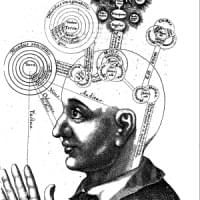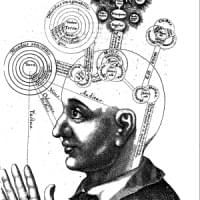The breakthrough could lead to more durable—and drastically safer—buildings.



North Carolina State University researchers have developed a kirigami-inspired mechanical computer that uses a complex structure of rigid, interconnected polymer cubes to store, retrieve and erase data without relying on electronic components. The system also includes a reversible feature that allows users to control when data editing is permitted and when data should be locked in place.
Mechanical computers are computers that operate using mechanical components rather than electronic ones. Historically, these mechanical components have been things like levers or gears. However, mechanical computers can also be made using structures that are multistable, meaning they have more than one stable state—think of anything that can be folded into more than one stable position.
“We were interested in doing a couple things here,” says Jie Yin, co-corresponding author of a paper on the work and an associate professor of mechanical and aerospace engineering at NC State. “First, we were interested in developing a stable, mechanical system for storing data.

The Journal of Consciousness Studies has an issue out on the meta-problem of consciousness. (Unfortunately, it’s paywalled, so you’ll need a subscription, or access to a school network that has one.)
As a reminder, there’s the hard problem of consciousness, coined by David Chalmers in 1995, which is the question of why or how we have conscious experience, or as described by others, how conscious experience “arises” from physical systems.
Then there’s the meta-problem, also more recently coined by Chalmers, on why we think there is a hard problem. The meta-problem is an issue long identified by people in the illusionist camp, those who see phenomenal consciousness as an illusion, a mistaken concept.

Michael Shermer has an article up at Scientific American asking if science will ever understand consciousness, free will, or God.
I contend that not only consciousness but also free will and God are mysterian problems—not because we are not yet smart enough to solve them but because they can never be solved, not even in principle, relating to how the concepts are conceived in language.
On consciousness in particular, I did a post a few years ago which, on the face of it, seems to take the opposite position. However, in that post, I made clear that I wasn’t talking about the hard problem of consciousness, which is what Shermer addresses in his article. Just to recap, the “hard problem of consciousness” was a phrase originally coined by philosopher David Chalmers, although it expressed a sentiment that has troubled philosophers for centuries.

This essay addresses Cartesian duality and how its implicit dialectic might be repaired using physics and information theory. Our agenda is to describe a key distinction in the physical sciences that may provide a foundation for the distinction between mind and matter, and between sentient and intentional systems. From this perspective, it becomes tenable to talk about the physics of sentience and ‘forces’ that underwrite our beliefs (in the sense of probability distributions represented by our internal states), which may ground our mental states and consciousness. We will refer to this view as Markovian monism, which entails two claims: fundamentally, there is only one type of thing and only one type of irreducible property (hence monism). All systems possessing a Markov blanket have properties that are relevant for understanding the mind and consciousness: if such systems have mental properties, then they have them partly by virtue of possessing a Markov blanket (hence Markovian). Markovian monism rests upon the information geometry of random dynamic systems. In brief, the information geometry induced in any system—whose internal states can be distinguished from external states—must acquire a dual aspect. This dual aspect concerns the (intrinsic) information geometry of the probabilistic evolution of internal states and a separate (extrinsic) information geometry of probabilistic beliefs about external states that are parameterised by internal states. We call these intrinsic (i.e., mechanical, or state-based) and extrinsic (i.e., Markovian, or belief-based) information geometries, respectively. Although these mathematical notions may sound complicated, they are fairly straightforward to handle, and may offer a means through which to frame the origins of consciousness.
Keywords: consciousness, information geometry, Markovian monism.

Ontic structural realism argues that structure is all there is. In (French, 2014) I argued for an ‘eliminativist’ version of this view, according to which the world should be conceived, metaphysically, as structure, and objects, at both the fundamental and ‘everyday’ levels, should be eliminated. This paper is a response to a number of profound concerns that have been raised, such as how we might distinguish between the kind of structure invoked by this view and mathematical structure in general, how we should choose between eliminativist ontic structural realism and alternative metaphysical accounts such as dispositionalism, and how we should capture, in metaphysical terms, the relationship between structures and particles. In developing my response I shall touch on a number of broad issues, including the applicability of mathematics, the nature of representation and the relationship between metaphysics and science in general.
Keywords: Causation; Dependence; Disposition; Metaphysics; Object; Representation; Structure.
Copyright © 2018. Published by Elsevier Ltd.

Several neuronal mechanisms have been proposed to account for the formation of cognitive abilities through postnatal interactions with the physical and sociocultural environment. Here, we introduce a three-level computational model of information processing and acquisition of cognitive abilities. We propose minimal architectural requirements to build these levels, and how the parameters affect their performance and relationships. The first sensorimotor level handles local nonconscious processing, here during a visual classification task. The second level or cognitive level globally integrates the information from multiple local processors via long-ranged connections and synthesizes it in a global, but still nonconscious, manner. The third and cognitively highest level handles the information globally and consciously. It is based on the global neuronal workspace (GNW) theory and is referred to as the conscious level. We use the trace and delay conditioning tasks to, respectively, challenge the second and third levels. Results first highlight the necessity of epigenesis through the selection and stabilization of synapses at both local and global scales to allow the network to solve the first two tasks. At the global scale, dopamine appears necessary to properly provide credit assignment despite the temporal delay between perception and reward. At the third level, the presence of interneurons becomes necessary to maintain a self-sustained representation within the GNW in the absence of sensory input. Finally, while balanced spontaneous intrinsic activity facilitates epigenesis at both local and global scales, the balanced excitatory/inhibitory ratio increases performance. We discuss the plausibility of the model in both neurodevelopmental and artificial intelligence terms.
Keywords: artificial consciousness; cognitive architecture; global neuronal workspace; synaptic epigenesis.

Recent advances in deep learning have allowed artificial intelligence (AI) to reach near human-level performance in many sensory, perceptual, linguistic, and cognitive tasks. There is a growing need, however, for novel, brain-inspired cognitive architectures. The Global Workspace Theory (GWT) refers to a large-scale system integrating and distributing information among networks of specialized modules to create higher-level forms of cognition and awareness. We argue that the time is ripe to consider explicit implementations of this theory using deep-learning techniques. We propose a roadmap based on unsupervised neural translation between multiple latent spaces (neural networks trained for distinct tasks, on distinct sensory inputs and/or modalities) to create a unique, amodal Global Latent Workspace (GLW). Potential functional advantages of GLW are reviewed, along with neuroscientific implications.
Keywords: attention; broadcast; consciousness; grounding; latent space; multimodal translation.
Copyright © 2021 Elsevier Ltd. All rights reserved.

This paper investigates the compatibility between the theoretical framework of the global neuronal workspace theory (GNWT) of conscious processing and the perturbational complexity index (PCI). Even if it has been introduced within the framework of a concurrent theory (i.e. Integrated Information Theory), PCI appears, in principle, compatible with the main tenet of GNWT, which is a conscious process that depends on a long-range connection between different cortical regions, more specifically on the amplification, global propagation, and integration of brain signals. Notwithstanding this basic compatibility, a number of limited compatibilities and apparent differences emerge. This paper starts from the description of brain complexity, a notion that is crucial for PCI, to then summary of the main features of PCI and the main tenets of GNWT. Against this background, the text explores the compatibility between PCI and GNWT. It concludes that GNWT and PCI are fundamentally compatible, even though there are some partial disagreements and some points to further examine.
Keywords: brain complexity; global neuronal worskpace theory; measurement of consciousness; perturbational complexity index; theory of consciousness.
© The Author(s) 2023. Published by Oxford University Press.

Philosophical and theoretical debates on the multiple realisability of the cognitive have historically influenced discussions of the possible systems capable of instantiating complex functions like memory, learning, goal-directedness, and decision-making. These debates have had the corollary of undermining, if not altogether neglecting, the materiality and corporeality of cognition-treating material, living processes as “hardware” problems that can be abstracted out and, in principle, implemented in a variety of materials-in particular on digital computers and in the form of state-of-the-art neural networks. In sum, the matter in se has been taken not to matter for cognition. However, in this paper, we argue that the materiality of cognition-and the living, self-organizing processes that it enables-requires a more detailed assessment when understanding the nature of cognition and recreating it in the field of embodied robotics. Or, in slogan form, that the matter matters for cognitive form and function. We pull from the fields of Active Matter Physics, Soft Robotics, and Basal Cognition literature to suggest that the imbrication between material and cognitive processes is closer than standard accounts of multiple realisability suggest. In light of this, we propose upgrading the notion of multiple realisability from the standard version-what we call 1.0-to a more nuanced conception 2.0 to better reflect the recent empirical advancements, while at the same time averting many of the problems that have been raised for it. These fields are actively reshaping the terrain in which we understand materiality and how it enables, mediates, and constrains cognition. We propose that taking the materiality of our embodied, precarious nature seriously furnishes an important research avenue for the development of embodied robots that autonomously value, engage, and interact with the environment in a goal-directed manner, in response to existential needs of survival, persistence, and, ultimately, reproduction. Thus, we argue that by placing further emphasis on the soft, active, and plastic nature of the materials that constitute cognitive embodiment, we can move further in the direction of autonomous embodied robots and Artificial Intelligence.
Keywords: active matter physics; artificial intelligence; basal cognition; embodied cognition; fine-grained functionalism; functionalism; multiple realisability; soft robotics.
Copyright © 2022 Harrison, Rorot and Laukaityte.